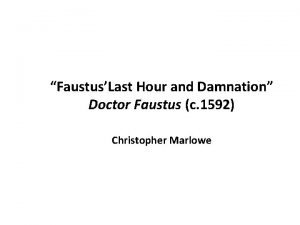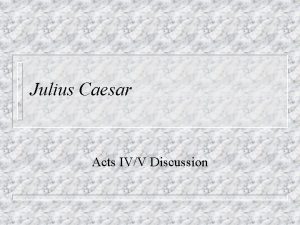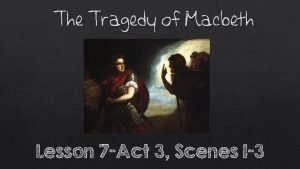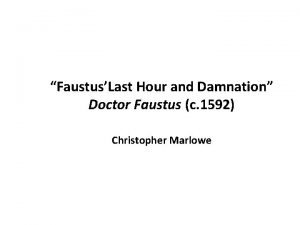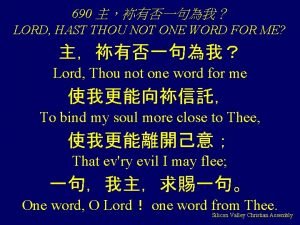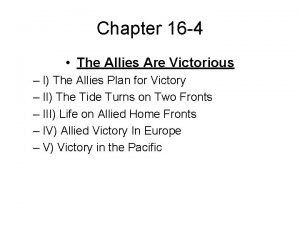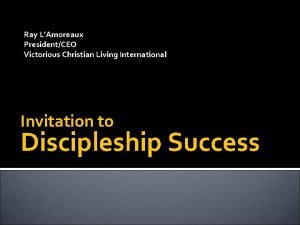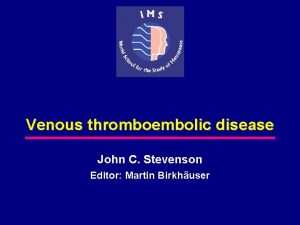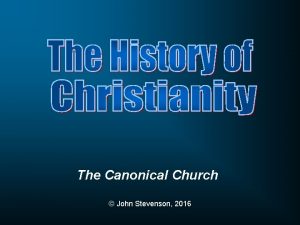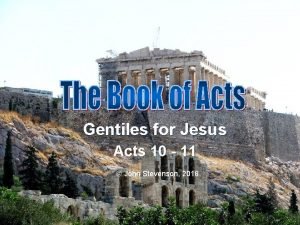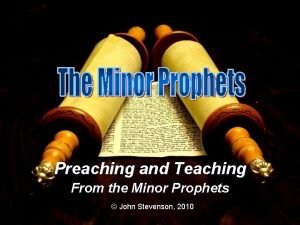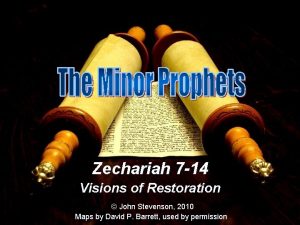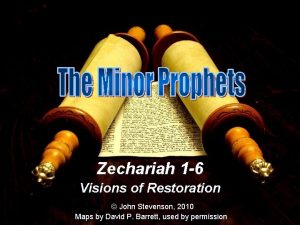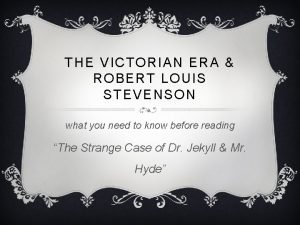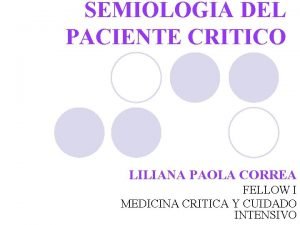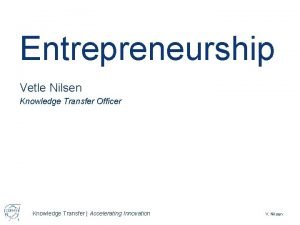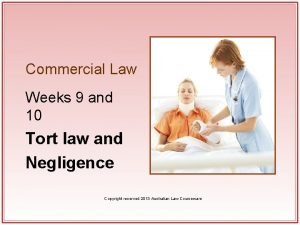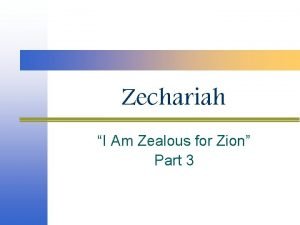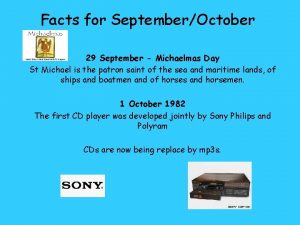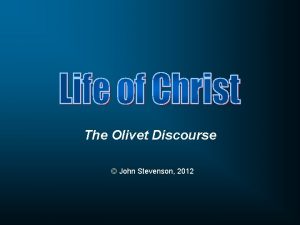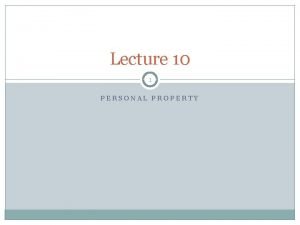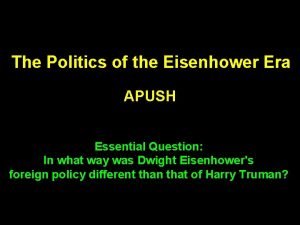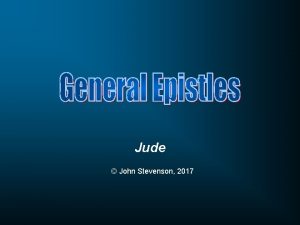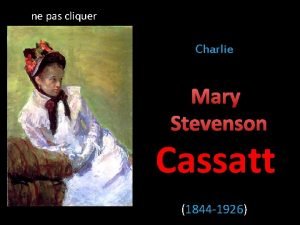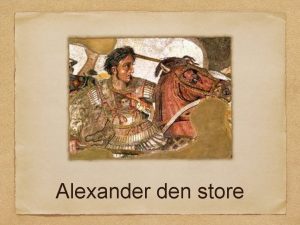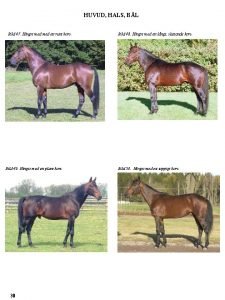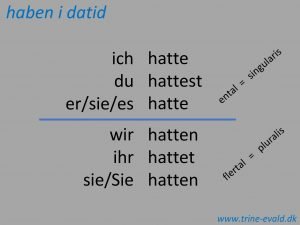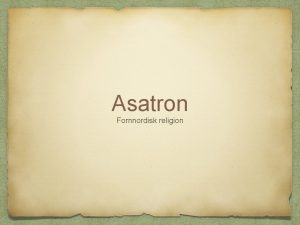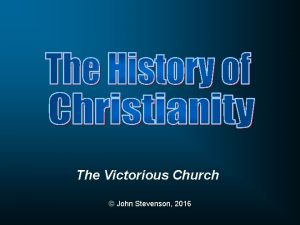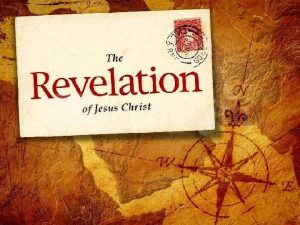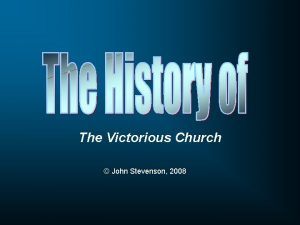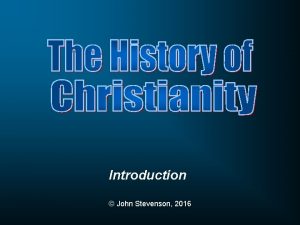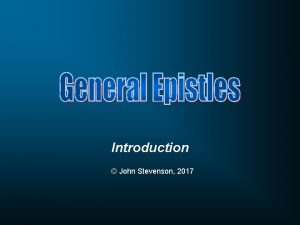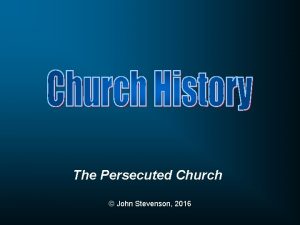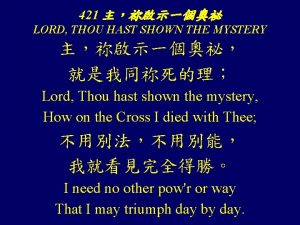The Victorious Church John Stevenson 2016 Thou hast





































































- Slides: 69

The Victorious Church © John Stevenson, 2016

“Thou hast conquered, Oh Galilean!” ― Julian the Apostate

1 500 The Ancient Church 1000 The Medieval Church 1500 2000 The Reformed Church

Tertullian 155 -222 We are but of yesterday, and we have filled every place among you - cities, islands, fortresses, towns, market-places, the very camp, tribes, companies, palace, senate, forum… (Apologeticus 37)

Church persecuted by Rome 100 1 Paul Polycarp Peter Marcion John 200 Edict of Toleration 300 Diocletian Tertullian Constantine 400 500

• Political Instability • Runaway Inflation • Pending civil collapse

• Division of Empire • Persecution of Christianity • Retirement (305)

Edict of Toleration Christians may again exist and rebuild the houses in which they used to meet, on condition that they do nothing contrary to public order. (Quoted from Eusebius, History of the Church 8: 17: 5).

Constantine • Battle for the Milvian Bridge (312)

Constantine • Battle for the Milvian Bridge (312) • “In this sign conquer” • Edict of Milan: Restated & expanded the Edict of Toleration (313) • Reunification of Roman Empire • Favored status (324)

Christianity as Favored Religion • Bishops given the right to judge civil cases • Sunday made into a public holiday • New Edict of Toleration: Christians not allowed to persecute pagans

What should be the attitude of Christians to the gaining of political power?

Before Constantine After Constantine Purity within the church Long periods of catechism training before receiving baptism Less purity within the church Christians known for their strict lifestyle Loosening of the standards Martyr mentality among the pious Monastic mentality began to emerge among the pious Requirements to become a Christian were minimized


Donatus Magnus (Died 355) What about those who have been baptized or married by fallen bishops?

Work as a group to formulate a detailed description of what you believe about Jesus • • As to His deity As to His sonship from God As He relates to the Holy Spirit As to His humanity

• Tertullian of Carthage (160 -220 A. D. ). – Coined the term “Trinity” – Spoke of how the son proceeded from God “Thus, the Father makes him equal to himself; and the Son, by proceeding from him, was made first-begotten, since he was begotten before all things; and the only-begotten, because he alone was begotten of God, in a manner peculiar to himself” (Against Praxeas).

• Tertullian of Carthage (160 -220 A. D. ). – Coined the term “Trinity” – Spoke of how the son proceeded from God – Argued against modalism • Origen of Alexandria (165 -254 A. D. ). – Although the Son is begotten of the Father, it is an eternal begetting

Arius • Priest in Alexandria, Egypt • Taught that Christ was a created being • Christ was the first created being who then created all the rest of creation • Claimed Tertullian for support, but denied that Jesus was God

Arius “God was not always a father; indeed, there was a time when God was alone, and he was not yet a father. Afterwards, he became a father. The son was not always… before he was begotten, he was not; rather, he has a beginning. ” – The Banquet

Arius • Deposed by Alexander, bishop of Alexandria • Became friends with Eusebius of Nicomedia – Shared Christological views – Bishop of Nicomedia – Distant relative of Constantine

296 - 373 • Egyptian Christian family • Childhood: Playing at baptism • Ordained as a deacon in 319 • Assistant to Bishop Alexander at Council of Nicea

Constantinople Nicaea Council of Nicaea • Met at Nicaea in 325 • 300 Bishops in attendance (5 from west) • Alexander & Athanasius versus Arius & Eusebius

The Nicene Creed We believe in one God the Father almighty Maker of all things visible and invisible. And in one Lord Jesus Christ, the Son of God, begotten of the Father, only‑begotten, that is, of the substance of the Father God of God, Light of Light, true God of true God, begotten not made, of one substance with the Father…

• • Nicaean Creed Celebration of Easter Lapsed bishops Celibacy of the clergy (argued but not mandated) • Prohibition of kneeling on Sundays

296 - 373 • • • Bishop of Alexandria in 328 Assassination attempts Banished by Roman emperors on 5 different occasions • Athanasius contra mundum (Athanasius against the world)

296 - 373 “God became man so that man might become God; and He manifested Himself in the flesh so that we might grasp the idea of the unseen Father; and He endured the insolence of men so that we might receive the inheritance of immortality. ”


Church persecuted by Rome 100 1 Paul Polycarp Peter Marcion John 200 Edict of Toleration Four Church Councils 300 Athanasius Arius Constantine 400 Fall of Rome 500

Church Councils of the 4 th and 5 th Centuries Council of Nicaea 325 Jesus is of the same substance as the Father Holy Spirit is co-eternal with Council of 381 the Father and Son, but the Constantinople three are distinct Homoousia Homoinousia Same Substance Similar substance

381 • Three Cappadocian Fathers – Basil the Great: Bishop of Caesarea – Gregory of Nyssa (Basil’s younger brother): Scholar – Gregory of Nazianzus (Eventual patriarch of Constantinople): Orator • One substance (ousia) in three persons (hypostaseis) • Arianism condemned

Church Councils of the 4 th and 5 th Centuries Council of Nicaea 325 Jesus is of the same substance as the Father Holy Spirit is co-eternal with Council of 381 the Father and Son, but the Constantinople three are distinct Council of Ephesus 431 Jesus is one person, fully divine and fully human

Bishop of Constantinople Bishop of Alexandria Mary as Christotokos Mary as Theototokos (“Christ-bearer”) (“God-bearer”) 431

431 • Called by Emperor Theodosius II • Began before the eastern bishops had arrived • Nestorius was deposed and declared a “new Judas” • Eastern bishops convened their own council under John of Antioch

431 • Eastern bishops deposed Cyril • Council deposed John of Antioch • Emperor upheld the decision of both councils

Church Councils of the 4 th and 5 th Centuries Council of Nicaea 325 Jesus is of the same substance as the Father Holy Spirit is co-eternal with Council of 381 the Father and Son, but the Constantinople three are distinct Council of Ephesus Council of Chalcedon 431 Jesus is one person, fully divine and fully human 451 The human and divine natures of Jesus are unmixed

Christ only seemed to be Docetic human Christ only seemed to be Ebionite divine Christ was created by God and Arian then created all else Christ had no human spirit; Apollinarian Logos came and replaced it Jesus became the Christ as Monoarchian His baptism

One God reveals Himself in Sabellianism three ways Logos indwelt the person of Nestorian Jesus making Christ a Godbearer Human nature of Christ Eutyches absorbed by the Logos Monophysite Christ had only one nature Christ had no human will; only Monothelite one divine will Adapted from Robert Walton


Emperor from 361 -363 • Nephew to Constantine the Great • Renounced Christianity and sought to restore paganism • Tried to rebuild Jewish temple in Jerusalem • Sought to invade Persia

Emperor from 379 -395 • Ended state support for paganism • Put an end to the Olympic Games • Excommunicated by Ambrose after riot in Thessalonica

Emperor from 379 -395 Eugenius 394

Church persecuted by Rome 100 1 Paul Polycarp Peter Marcion John 200 Origen Edict of Toleration Fall of Rome Theodosius 300 Athanasius Arius Constantine 400 500

Church persecuted by Rome 100 1 Paul Polycarp Peter Marcion John 200 Origen Edict of Toleration Four Church Councils 300 400 Athanasius Arius Augustine Constantine Pelagius Fall of Rome 500


Catacomb Burial Lid depicting the Magi

Moses striking the Rock

Catacomb depiction of the Fiery Furnace



Growth of Church Architecture • Stoa as a meeting place

Growth of Church Architecture • Stoa as a meeting place • The house church

Growth of Church Architecture • • • Stoa as a meeting place The house church Church versus temple





Growth of Church Architecture • • Stoa as a meeting place The house church Church versus temple Octagonal church

Growth of Church Architecture • • • Stoa as a meeting place The house church Church versus temple Octagonal church Basillica at Philippi

Growth of Church Architecture • • • Stoa as a meeting place The house church Church versus temple Octagonal church Basillica Cruciform



Old St Peter’s Basillica






 Ah faustus now hast thou
Ah faustus now hast thou Hast thou
Hast thou Thou hast described a hot friend cooling.
Thou hast described a hot friend cooling. Hast thou love life
Hast thou love life The king doth wake tonight
The king doth wake tonight Hast thou heard him
Hast thou heard him Thou hast it now king cawdor glamis all
Thou hast it now king cawdor glamis all Ah faustus now hast thou
Ah faustus now hast thou Thou hast comforted me marvelous much
Thou hast comforted me marvelous much Hast thou
Hast thou Chapter 16 section 4 the allies are victorious
Chapter 16 section 4 the allies are victorious Democratic developments in england
Democratic developments in england Victorious christian living international
Victorious christian living international Military industrial complex
Military industrial complex Come thou fount come thou king lyrics
Come thou fount come thou king lyrics Thou detestable maw thou womb of death
Thou detestable maw thou womb of death Dr john stevenson
Dr john stevenson Dr jon stevenson
Dr jon stevenson John stevenson syndrome
John stevenson syndrome Dr john stevenson
Dr john stevenson Dr john stevenson
Dr john stevenson Acts 10 11
Acts 10 11 John stevenson bible study
John stevenson bible study Zechariah stevenson update
Zechariah stevenson update Zechariah stevenson
Zechariah stevenson Robert louis stevenson victorian era
Robert louis stevenson victorian era Up in the air and over the wall till i can see so wide
Up in the air and over the wall till i can see so wide Clasificacion stevenson
Clasificacion stevenson Tort and contract difference
Tort and contract difference Howard h stevenson
Howard h stevenson Donoghue v stevenson case summary
Donoghue v stevenson case summary Donoghue v stevenson case summary
Donoghue v stevenson case summary I am zealous
I am zealous Zechariah stevenson
Zechariah stevenson Zechariah stevenson sentence
Zechariah stevenson sentence Building a life howard stevenson
Building a life howard stevenson Ilona stevenson
Ilona stevenson Dr matthew stevenson
Dr matthew stevenson Valerie stevenson
Valerie stevenson Peter stevenson compassion in world farming
Peter stevenson compassion in world farming What is the difference between weather and climate
What is the difference between weather and climate Maeve stevenson
Maeve stevenson The short child occupational profile
The short child occupational profile Maeve stevenson
Maeve stevenson Rowland v stevenson
Rowland v stevenson Automated protein crystallization
Automated protein crystallization Eisenhower foreign policy apush
Eisenhower foreign policy apush Stevenson and black 2007 inclusion spectrum
Stevenson and black 2007 inclusion spectrum Dick van dyke dick tracy mary poppins
Dick van dyke dick tracy mary poppins Jude stevenson
Jude stevenson Emotivism ethics
Emotivism ethics Louis balfour
Louis balfour Mary stevenson cassatt
Mary stevenson cassatt Forrest voight
Forrest voight Giles corey the crucible
Giles corey the crucible Anabaptist vs baptist
Anabaptist vs baptist Wenn du heute morgen gesund aufgewacht bist
Wenn du heute morgen gesund aufgewacht bist Was hast du im urlaub gemacht
Was hast du im urlaub gemacht Wann hast du geburtstag?
Wann hast du geburtstag? Ich habe du hast
Ich habe du hast Musikenya
Musikenya Petrus hast du mich lieb
Petrus hast du mich lieb Geh deinen weg ohne eile und hast
Geh deinen weg ohne eile und hast Arbeitsblatt ferien
Arbeitsblatt ferien Anders hast
Anders hast Alexander den store häst
Alexander den store häst Rakhasig häst
Rakhasig häst Ich hatte du hattest
Ich hatte du hattest Gris i asatron
Gris i asatron Fotografieren 變化
Fotografieren 變化
